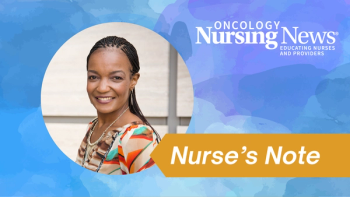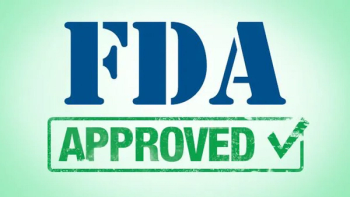
- June 2014
- Volume 8
- Issue 5
Implementation of Modified Primary Nursing in an Ambulatory Cancer Center
Improvements in cancer treatment have increased survival rates, and with more patients being diagnosed with cancer, complexity of disease state, and treatment toxicity, it can be challenging to identify an appropriate care delivery model.
Marisa A. Cortese, PhD, FNP-BC
Senior Manager
Oncology Education, Quality and Research
Improvements in cancer treatment have increased survival rates, and with more patients being diagnosed with cancer, complexity of disease state, and treatment toxicity, it can be challenging to identify an appropriate care delivery model.1-3 Care delivery—especially in complex, multidisciplinary programs—requires a well-conceptualized model to guide practice.2
Nurses are the frontline providers and a crucial component in delivering high-quality patient care.3 Nursing care delivery models provide an infrastructure and organization for the care provided to patients and their families.2,4 The primary nursing model emphasizes one-to-one nurse—patient relationships and the importance of continuity of care.5
Relationship Centered Care
At the Mount Sinai Hospital (MSH), our care delivery model is incorporated within the MSH Relationship Centered Care (MSHRCC) professional practice model.6 MSHRCC is an interdisciplinary model that extends the scope of the Relationship Based Care (RBC) model that focuses on relationships with patient/family, colleagues, and self.4 The MSHRCC includes all of the same relationships as the RBC model but extends the relationship to the entire healthcare team, as well as local and global communities. It contains six critical dimensions: leadership, teamwork, professional nursing practice, patient care delivery system, resource-driven practice, and outcomes measurement.
The expected outcomes are to increase patient and staff satisfaction, establish efficiency in the workplace, and improve patient safety.4,6 Modified primary nursing (MPN) is the care delivery model for the MSHRCC. It provides an explanation for the manner in which care is planned and delivered, the required skill sets, and expected outcomes. The tenets of MPN are nurse— patient relationship, accountability, autonomy, continuity, and collaboration.7
Implementation strategies have been developed to provide structure and consistency throughout all units at Mount Sinai Hospital. These strategies include welcoming patients/families, shift report, back-to-basics care, developing patient relationships, RN/MD teams, and monitoring outcomes.7
The majority of cancer patients receive their treatment in the ambulatory setting. The Derald H. Ruttenberg Treatment Center of the Tisch Cancer Institute at Mount Sinai offers a wide range of outpatient services for patients diagnosed with solid tumors and hematologic malignancies.
Cancer patients have access to a range of treatments, including chemotherapy, biologic therapy, bone marrow transplant (BMT), and clinical trials. Thirty medical oncologists, 20 nurse practitioners and physician assistants, and 57 RNs provide care to patients at the Ruttenberg Treatment Center.
Oncology nursing plays a critical role in ensuring patient safety and quality care to patients, and to improve our patient and staff satisfaction, we adapted the MSHRCC model and MPN to assist our patient population.
Continuity of Care
The main focus of MPN is to provide continuity of care to patients. Patients entering the Ruttenberg Treatment Center are immediately greeted by staff. Each infusion room is equipped with a TV, call bell, and iPad. A patient care board is located in each room, and RNs add their name and title.
When patients meet with their RN, they review their plan of care, medications, symptoms, and psychosocial issues. Nurses are expected to have a 5-minute “sit-down” with each patient to discuss family, career, coping, and fears.7
Patients are assigned to one of three specific infusion areas, or “pods” (Hematologic Malignancy, BMT, and Solid Tumor). Nurses were given the option to identify in which area they preferred to practice. In addition, an electronic patient tracker system was implemented which tracks the location of patients during their visit. Nurses are also able to self-assign themselves to recurring patients, thus providing continuity of nursing care to patients and their families.
Three months after implementation of the new staffing structure and patient tracker, staff identified increased confidence in their skills and disease- specific knowledge and an enhanced ability to develop effective nurse—patient relationships.
Oncology RNs were engaged in the process of implementing the MSHRCC and modified primary nursing models, and staff recommendations assisted in the successful transition into this new nursing care practice. Assessment is gathered through patient and RN satisfaction scores and onsite observation. Patient satisfaction scores also are tracked on a monthly basis.
During the transition phase, we came across some challenges: (1) nursing staff were concerned about losing their skills to work with a wide variety of cancer diagnoses if they are assigned to disease-focused pods; (2) the patient tracker system needed many modifications in order for the tool to be effective in tracking current/ future patient visits; and (3) ancillary staff needed to be educated on the tenets of MSHRCC.
The implementation of MSHRCC and modified nursing was challenging; however, nursing staff have demonstrated job satisfaction and, in turn, the model has yielded high RN retention rates as well as an improvement in patient satisfaction scores. Moving forward, our goal is to continue to improve our patient satisfaction scores, communication among staff, and workplace efficiency.
References
- Lee CT, Fitzgerald B, Downey S, Malcomb M. Models of care in outpatient cancer centers. Nurs Econ. 2012;30(2):108-116.
- Jost SG, Bonnell M, Chacko SJ, Parkinson DL. Integrated primary nursing: a care delivery model for the 21st-century knowledge worker. Nurs Adm Q. 2010;34(3):208-216.
- Friese CR, Himes-Ferris L. Nursing practice environments and job outcomes in ambulatory oncology settings. J Nurs Adm. 2013;43(3):149-154.
- Person C. Patient care delivery. In: Koloroutis M, ed. Relationship-Based Care. A Model for Transforming Practice. Minneapolis, MN: Creative Health Care Management; 2004:159-182.
- Manthey M, Ciske K, Robertson P, Harris I. Primary nursing. Nurs Forum. 1970;9(1):64-83.
- The Mount Sinai Hospital Department of Nursing. Mount Sinai Hospital Relationship Centered Care. 2013.
- The Mount Sinai Hospital Department of Nursing. Care Delivery Model: Modified Primary Nursing. 2013.
Articles in this issue
over 11 years ago
Educating Patients About Radon Exposure and Lung Cancer Riskover 11 years ago
Medication-Induced Constipation Is Poorly Managedover 11 years ago
Using Mindfulness-Based Therapies for Symptom Management in Cancerover 11 years ago
Early Nutrition Support in Head and Neck Cancerover 11 years ago
Symptom Management in Oncology Nursing-"We're Not There Yet"over 11 years ago
Extraordinary Healer Goes "Above and Beyond"Newsletter
Knowledge is power. Don’t miss the most recent breakthroughs in cancer care.














































































